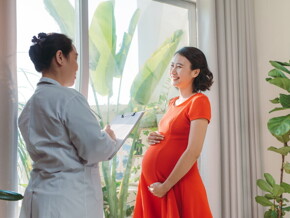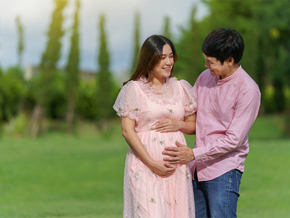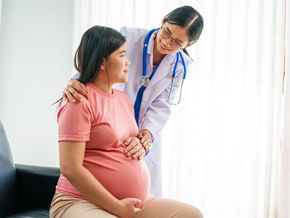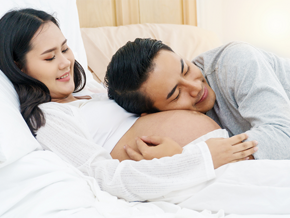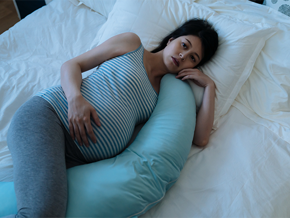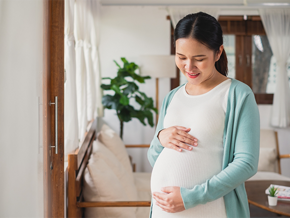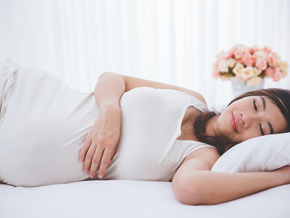
How Well Do You Know the Expanded Maternity Leave in the Philippines?
The period after childbirth is often referred to as the fourth trimester for a reason. During those early postpartum months, you feel an overwhelming mix of joy, confusion, and stress. That's why moms celebrated the signing of the Expanded Maternity Leave Law in the Philippines. It gave them precious time to care for themselves, adjust to motherhood, and bond with their baby. Plus, it helped protect their income and job security.
To help you know and exercise your rights, here are answers to common questions about the Expanded Maternity Leave Law—what you’re entitled to, who qualifies, and how to apply.
What Is the Expanded Maternity Leave Law?
The Expanded Maternity Leave Law (or RA 11210) provides significant benefits to support you as you welcome your new child. It highlights the importance of maternal health and the critical first few months of a baby's life.
Before RA 11210, the maternity leave was shorter—typically 60 days (two months) for normal delivery or 78 days (two and a half months) for a cesarean section. And the benefits were also limited to their first four pregnancies. The expanded maternity leave changed this significantly, offering more comprehensive and inclusive support.
How Many Days of Leave Do I Get?
You'll receive 105 days (or 3.5 months) of paid maternity leave. Your full pay is computed based on your basic salary or your average daily salary credit (ADSC) for SSS members.
This is a significant step forward, especially because countries like the United States don’t have a federal mandate for paid maternity leave for new mothers.
A 2023 Philippine study suggests that longer paid leave really helps create a supportive environment for breastfeeding. While these policies are in the right direction, the study also notes the need for continued efforts so every working mother can fully access and enjoy these benefits.
This extended time is also vital for a mother's well-being. A 2023 systematic review in The Lancet Public Health found that more generous paid maternity leave, particularly longer durations, is linked to improved mental health for moms, including fewer depressive symptoms.
I’m a Solo Mom. Am I Entitled to 105 Days, Too?
Yes! In fact, under the Solo Parents' Welfare Act (RA 8972), you'll receive an additional 15 days of paid leave. This brings your total paid leave to 120 days, also calculated based on your SSS ADSC. This guide on solo parent benefits lists all the support you're entitled to.
Is the Expanded Maternity Leave Applicable Only to Married Women?
One of the best things about the RA 11210 is its inclusivity. Here’s who’s covered:
- All female workers, whether you are in the public or private sector
- Married or unmarried women
- All pregnant women regardless of their child's legitimacy
- Regular, contractual, or probationary employees, kasambahays, and self-employed women
- Mothers during every instance of pregnancy, including miscarriage or emergency termination of pregnancy (ETP)
You can claim your maternity leave benefits each time you become pregnant via SSS throughout your working life.
I Heard the Maternity Leave is Transferrable. What Does That Mean?
You can allocate up to seven days of your paid maternity leave (and the corresponding SSS benefit for those days) to your child's father, but the benefit isn't limited to him! You can transfer the seven days to the person (yes, they don't have to be a relative) who will help you with your baby's care. You can do this when you apply for your SSS maternity benefits.
If you're also wondering about your husband's leave, learning about Paternity Leave in the Philippines can be a great next step.
Can I Extend My Maternity Leave If I Need More Time?

The expanded maternity leave provides 105 days of fully paid leave for live births, ensuring bonding time for mother and child.
If you want to extend your time after your paid leave, you can take an additional 30 days (one month) of leave without pay. You'll need to provide written notice to your employer at least 45 days before your paid maternity leave ends.
What Happens If I Experience Miscarriage?
In the event of a miscarriage or ETP, the law provides for 60 days (two months) of maternity leave with full pay. If a childbirth unfortunately results in a stillbirth, the law grants you the full 105 days of paid maternity leave.
Is My Entire Maternity Pay Tax-Free?
Yup! Your full pay during your expanded maternity leave, which includes the SSS benefit portion and any salary differential paid by your employer, is non-taxable.
Can I Still Receive Maternity Leave Benefits if My Job Ended Before My Childbirth?
Absolutely! Even if your job ended before your childbirth or qualifying event (like a miscarriage), the Expanded Maternity Leave Law ensures you can still claim your maternity benefits through SSS. Make sure you've made at least three monthly SSS contributions within the 12-month period right before your baby's due date.
What Do Employers Need to Provide Under the Expanded Maternity Leave Law?
The law requires your employer to accomplish the following:
- Grant your maternity leave when requested
- Pay your salary on time during your leave (SSS will later reimburse them)
- Protect your job (you cannot be demoted or fired for taking your maternity leave)
The Expanded Maternity Leave law also prevents employers from discriminating against pregnant women when hiring or during employment. Being clear on these points can make your discussions with your employer smoother. This helps you confidently plan your leave and eventual return, ensuring work-life balance for quality time with your little one.
How Do I File for Expanded Maternity Leave?

All female workers are eligible for expanded maternity leave, regardless of their civil or employment status.
Knowing how to apply for your expanded maternity leave helps make things easier as you get ready for your baby. Here’s the usual way to claim your SSS maternity benefits:
1. Tell your employer early.
Inform your employer or company HR of your pregnancy and expected due date. It's best to do this as early as you can. Your employer will then need to inform the SSS. The law's official guidelines (the Expanded Maternity Leave IRR) detail this notification process.
2. Prepare your key documents.
Always double-check with the SSS or your HR department for the most current list, but typically, you’ll need to prepare these documents for your SSS application:
- SSS Maternity Notification Form (MAT 1), which you or your employer will fill out and submit
- Proof of your pregnancy, like an ultrasound report or a medical certificate from your doctor
- Your ID, like your UMID card, SSS ID, or two other valid IDs (both should have your signature, and at least one needs a photo)
- A certified true copy of your child's birth certificate registered with the Local Civil Registrar and authenticated by the Philippine Statistics Authority (PSA).
In the case of a miscarriage or ETP, you'll also need a medical certificate or relevant hospital records.
3. Receive your benefits.
How you receive your maternity benefits depends on your employment.
- If you're employed, your employer is required to pay your salary during your maternity leave, like they usually would.
- If you're self-employed, a voluntary SSS member, or an OFW, the SSS will pay your maternity benefit directly, usually depositing it into your designated bank account.
Making the Most of Your Expanded Maternity Leave
The expanded maternity leave is more than just time off; it's an investment in the health and well-being of mothers and children. Use this time to recover, bond with your baby, establish routines, and seek support when needed. Remember to file the necessary notifications with your employer and the SSS and GSIS well in advance.
Ready to embrace this new chapter? Connect with other parents on the ParentTeam Moms and Dads Facebook group and share your insights (or ask more questions!) about optimizing your expanded maternity leave!
References
Philippine Commission on Women. "Availment of the 105-Day Expanded Maternity Leave Under Republic Act 11210 FAQs." Accessed May 22, 2025. https://pcw.gov.ph/faq-republic-act-11210/.
Philippine Commission on Women. "Republic Act 11210: An Act Increasing the Maternity Leave Period to One Hundred Five (105) Days for Female Workers With an Option to Extend for an Additional Thirty (30) Days Without Pay, and Granting an Additional Fifteen (15) Days for Solo Mothers, and for Other Purposes." Last modified February 20, 2019. Accessed May 22, 2025. https://pcw.gov.ph/republic-act-11210-an-act-increasing-the-maternity-leave-period-to-one-hundred-five-105-days-for-female-workers-with-an-option-to-extend-for-an-additional-thirty-30-days-without-pay-and-granting/.
Social Security System. "Maternity Benefit." Accessed May 22, 2025. https://www.sss.gov.ph/maternity-benefit/.












